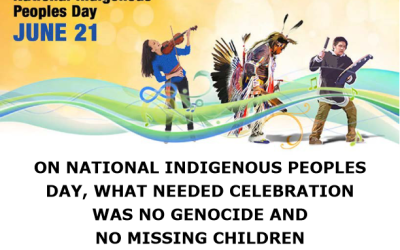The Frontier Centre for Public Policy today released its third annual Aboriginal Governance Index (AGI). The AGI is a result of surveys conducted in 98 First Nation reserves across the Prairies with over 5,100 on-reserve residents; the residents answered a questionnaire in person about their reserve government. Drawing upon five broad areas of good governance, the five categories selected for evaluation were:
- Elections: How fair and impartial are votes for leaders?
- Administration – How effectively is the band’s business conducted?
- Human Rights – How much regard is assigned to basic rights?
- Transparency – How well are citizens informed about government?
- Economy – How well is the community providing economic development?
The First Nations with the highest weighted composite score are identified as high-performing First Nation communities. In 2009, the Aboriginal Governance Index provides final ranking for 68 First Nations although 98 bands were surveyed (30 communities did not provide a sufficient quantity of surveys to be rated). For the first time, the Index includes indigenous communities in Alberta, which performed exceptionally well in the Index with the O’Chiese First Nation, near Rocky Mountain House, taking top spot.
The O’Chiese band was awarded $50,000 for it success, the Frontier’ Centre’s Big Bear* prize to be awarded annually to the top-performing band.
Top ten reserves: In this year’s Index, the following First Nations scored in the top ten of those having superior systems of governance:
• O’Chiese First Nation (AB) 73.2%
• Rolling River Nation (MB) 69.9%
• Siksika Nation (AB) 68.6%
• Beardy’s and Okemasis First Nation (SK) 67.8%
• Wesley First Nation (AB) 66.3%
• Mikisew Cree First Nation (AB) 65.8%
• Bearspaw First Nation (AB) 65.6%
• Mosakahiken Cree Nation (MB) 65.5%
• Swan Lake First Nation (MB) 65.4%
• Muskoday First Nation (SK) 65.3%
Don Sandberg, director of the Aboriginal Frontiers Project, notes the Index is positive and intended to help First Nations discover how they can succeed: “The Aboriginal Governance Index was never intended to seek out the negative aspects of our First Nations communities or to attempt to undermine our reserves. We started the AGI program to try and assist First Nations move forward on band governance issues.”
The Index found that three measurements are the best indicators of the overall health of a band’s health: A trustworthy election process, transparent government and institutions, and competent band administration.
Joseph Quesnel, co-author of the study, stressed that in this age of Native self-government, it is critical that First Nation governments understand the value of good institutions and best-practice governance.
“Self-government has become a buzzword within indigenous scholarly and political circles, not to mention among trend-oriented politicians,” said Quesnel. “This idea is often presented as the ‘silver bullet’ that will yield better social and economic outcomes for First Nation people in Canada. But while local decision-making autonomy is certainly important to any community, proper governance structures and processes are more so.”
“To simply grant powers to any government does not ensure that elections are fairly run, that a government is transparent ore that the administration is clean. And those are all critical factors as good governance benefits the entire community.”
More details on the survey:
- For the first time, the Aboriginal Governance Index included both a long and a short survey. The longer survey was used to gather more in-depth information about each First Nation.
- The sample size this year is 5,106, with 1,688 coming from Manitoba, 2,616 from Saskatchewan and 802 from Alberta. Of these, 4,635 are short surveys and 471 were long form.
- Overall, in all three provinces, 45.7 per cent of the respondents were male and 54.3 per cent female.
- Many communities either declined to participate or refused entry to our workers onto their reserve.
For a list of all communities surveyed, their results, and more information, please contact us. Note that as we cannot provide explanations for every community that declined to participate, we invite the media to contact band leadership within these communities directly.
For a full list of band scores including listed by province, the Frontier Centre’s Rewarding Good Governance on Canada’s Reserves: The Third Annual Aboriginal Governance Index can be downloaded here
For more information and to arrange an interview with the study’s authors, media (only) should contact:
Gary Slywchuk
Troy Media Corporation
gary.slywchuk@troymedia.com
403-835-8192
* Who Was Chief Big Bear?
Big Bear was a half-Cree, half-Ojibway leader and medicine man born in 1825. His own family had endured famine and smallpox. He eventually came to preside over a band estimated at 400 family lodges, about 3,000 individuals.
In 1882, Big Bear became the last prairie chief to sign the numbered treaties that established the Indian Reserve system. Although all other plains leaders had signed treaties by 1876, Big Bear refused to sign when presented with Treaty Six in 1878. He feared the loss of freedom it entailed would crush his people’s way of life. Already compromised by disease and warfare, his people faced extreme destitution due to the collapse of the buffalo hunt, and knew a national railroad would seal their fate.
The Government of Canada withheld emergency rations and promised signing bonuses and retroactive treaty money to coerce Big Bear’s signature. The imminent starvation of his immediate family closed the matter. Big Bear’s four-year agony, during which he withdrew from active leadership of his flock and stopped negotiating, took the form of a religious retreat, commanded by a vision. His concern about the effects of reserve life on his people, borne out by their history since, spurred him to seek a spiritual solution which is undergoing a latter-day revival among aboriginal populations on the prairies.

